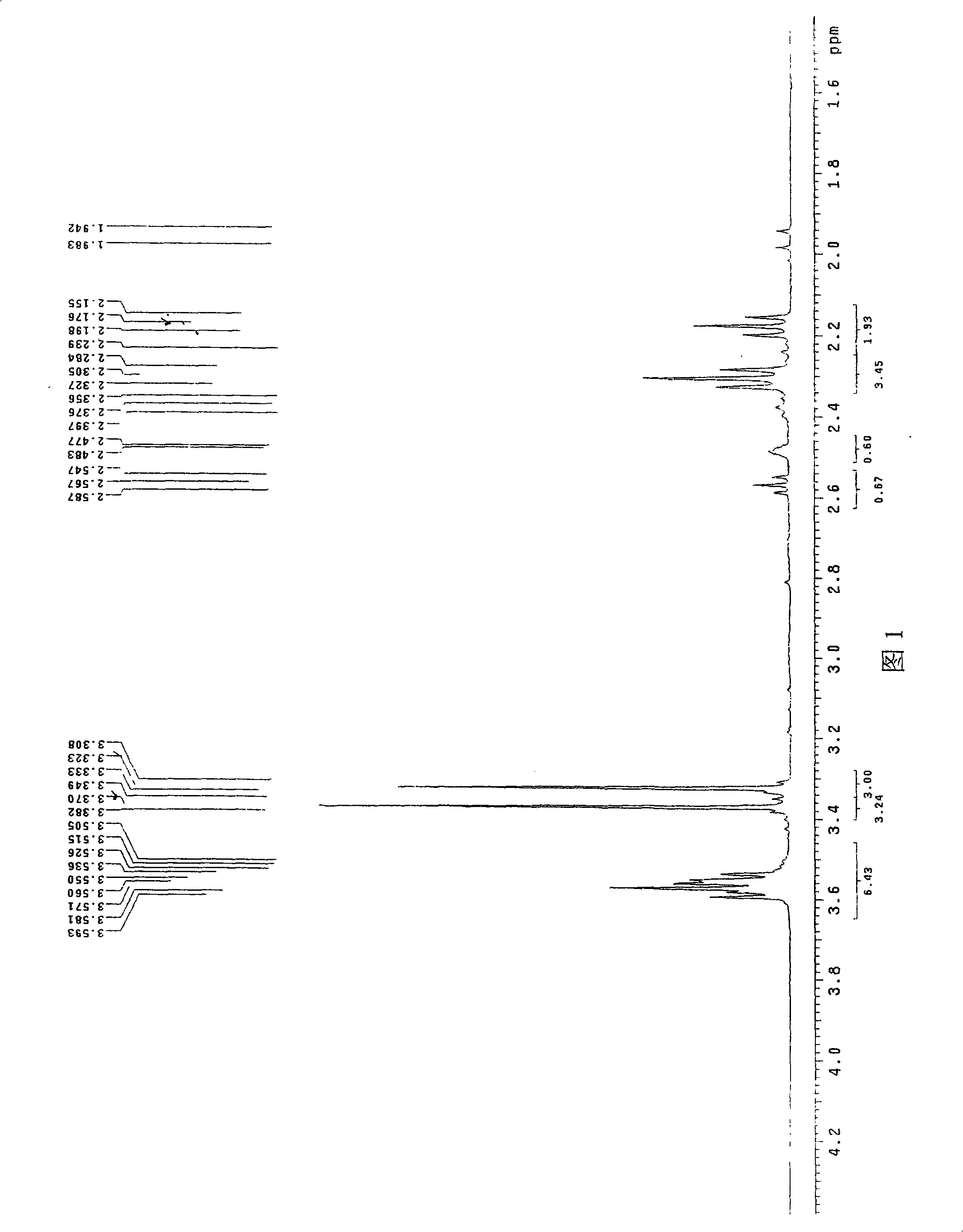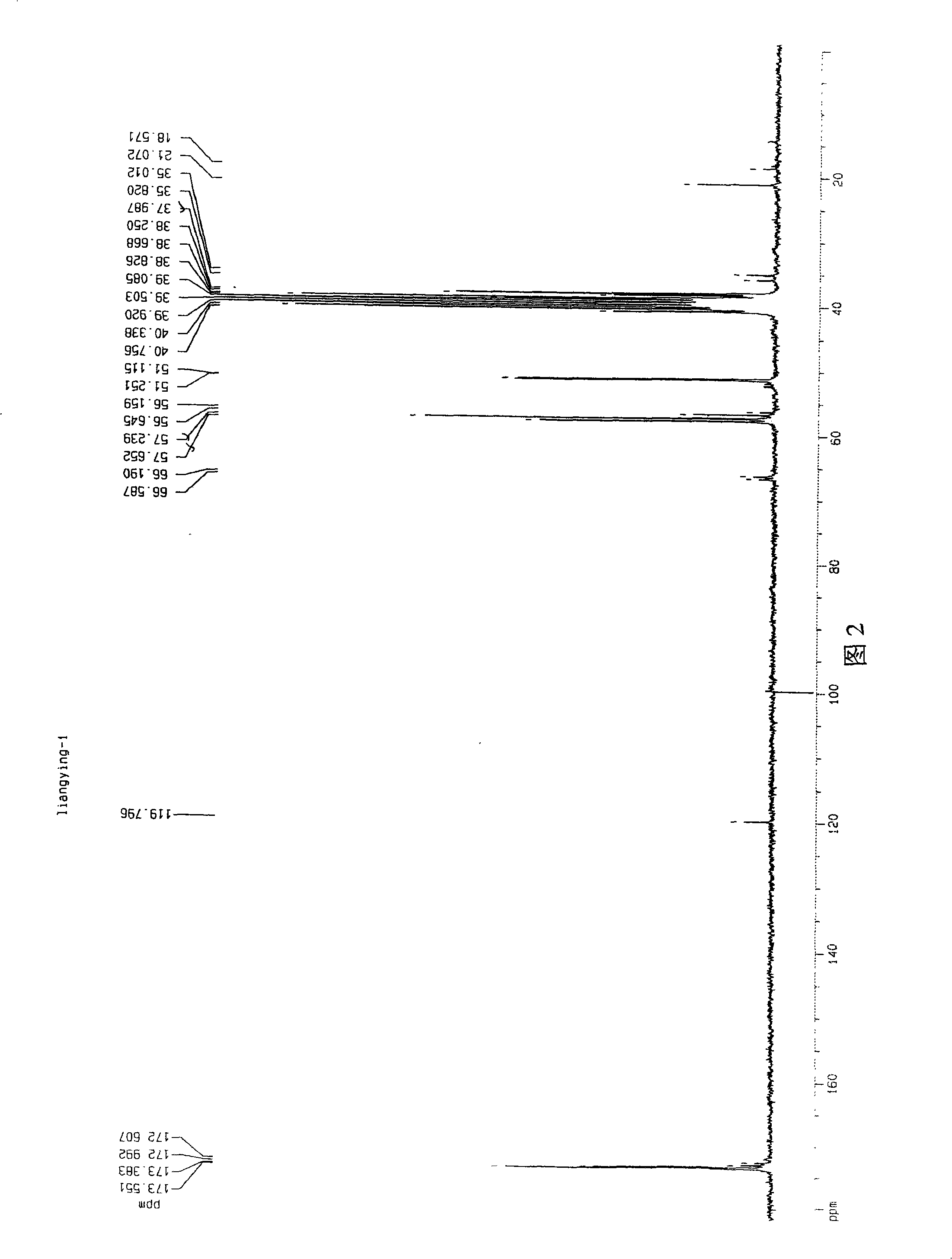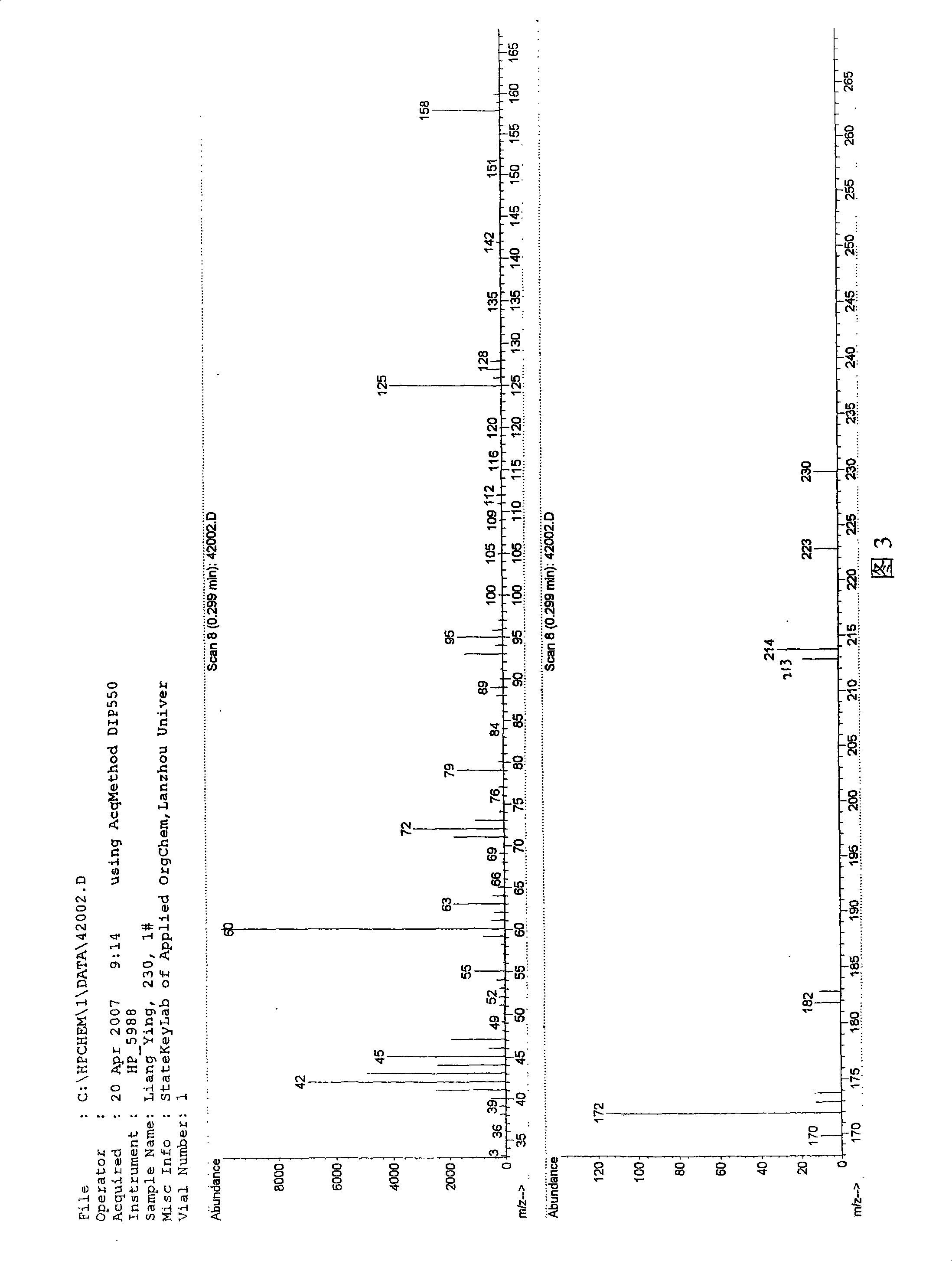Broadspectrum specificity polyclone antibody of methoxyl organophosphorus pesticide and uses thereof
A polyclonal antibody, organophosphorus pesticide technology, applied in specific peptides, instruments, analytical materials, etc.
- Summary
- Abstract
- Description
- Claims
- Application Information
AI Technical Summary
Problems solved by technology
Method used
Image
Examples
Embodiment 1
[0041] Example 1. Synthesis of Haptens
[0042] 0.58 g of acrylonitrile and 18 mL of 6% potassium hydroxide aqueous solution were added to 4 g of 45% O, O-dimethyl sodium thiophosphate aqueous solution, and the mixture was refluxed in an oil bath for 4 h. Cool to room temperature after the reaction, and acidify the reaction solution through 732 strong ionic resin. The solvent was evaporated under vacuum, and the residue was separated by column chromatography to obtain a yellow oil as the target product. The substance was subjected to thin-layer chromatography TLC, and the Rf value obtained by using ethyl acetate:petroleum ether=1:2 as a developing solvent was 0.31.
[0043] The spectrogram in Figure 1 is parsed as: 1 H NMR (DMSO-d 6 )δ: 2.18(t, J=6.3Hz, 2H, CH 2 CO), 2.31(t, J=6.6Hz, 2H, SCH 2 ), 3.35 (d, J=14.1Hz, 6H, CH 3 O); Fig. 2 spectrogram resolves as 13 C NMR (DMSO-d 6 )δ: 37.99 (CH 2 CO), 51.19 (d, J=2.7Hz, SCH 2 ), 57.45 (d, J=30.9, CH 3 O), 173.55 (COOH);...
Embodiment 2
[0044] Synthesis of embodiment 2 antigen and coated antigen
[0045] antigen:
[0046] Active ester method Weigh 0.05mmol (equivalent to 10.8mg) hapten and 0.15mmol (equivalent to 15.5mg) N-hydroxysuccinimide NHS, dissolve in 0.4mL DMF, weigh 0.1mmol (equivalent to 20.6mg ) Cyclodihexylcarboimide DCC was dissolved in 0.4mL of DMF, the above two solutions were combined, stirred and reacted at room temperature for 4h, and the above reaction solution was centrifuged to remove the precipitated dicyclohexyl urea and the supernatant; 40mg BSA was weighed, Dissolve in 10 mL of carbonate buffer solution to form the reaction solution; place the reaction solution on a magnetic stirrer, add the supernatant solution dropwise to the reaction solution at 4°C, and magnetically stir overnight. After the reaction, the reaction solution was put into a dialysis bag, and dialyzed in ultrapure water at 4° C. for three days, and the water was changed every four hours. After dialysis, aliquots wer...
Embodiment 3
[0054] Example 3 Preparation of polyclonal antibody
[0055] Three New Zealand white rabbits were immunized with the two antigens prepared according to the method of Example 2, and the specific immunization scheme is shown in Table 1.
[0056] Table 1 Animal immunization scheme for preparing broad-spectrum specific antibody
[0057] Number of immunizations
PUM
 Login to View More
Login to View More Abstract
Description
Claims
Application Information
 Login to View More
Login to View More - R&D
- Intellectual Property
- Life Sciences
- Materials
- Tech Scout
- Unparalleled Data Quality
- Higher Quality Content
- 60% Fewer Hallucinations
Browse by: Latest US Patents, China's latest patents, Technical Efficacy Thesaurus, Application Domain, Technology Topic, Popular Technical Reports.
© 2025 PatSnap. All rights reserved.Legal|Privacy policy|Modern Slavery Act Transparency Statement|Sitemap|About US| Contact US: help@patsnap.com



